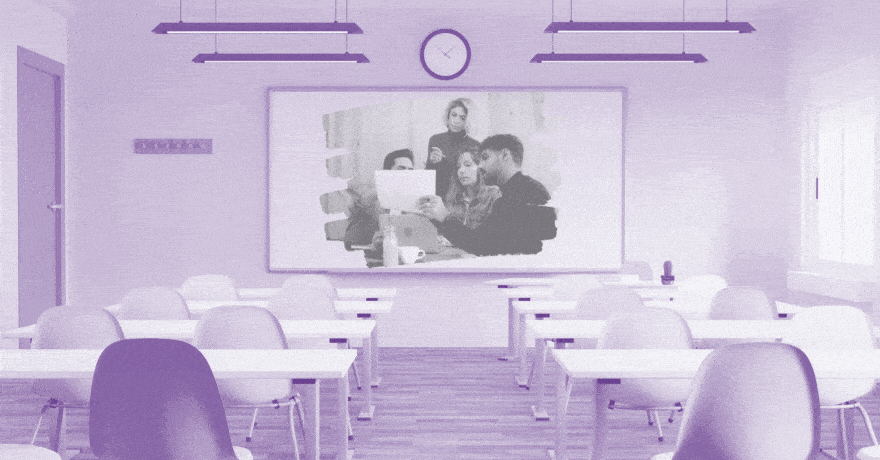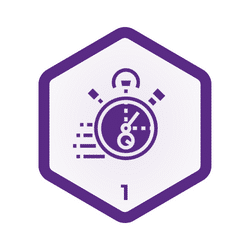The mechanics of completing lessons learned efforts can be deceivingly simple: You get people in a room (physically or otherwise) and discuss opportunities for improvement based on what they experienced during a project. However, many teams and organizations experience difficulty in realizing the full business value they expect from their lessons learned efforts.
First, it is helpful to define what a lesson learned is. In a broad sense, a lesson learned is knowledge created over the course of past work that is recalled and applied to improve present and future efforts. For example, a project team overcoming a challenge by adapting an existing process or tool can yield innovations towards future project approaches. Another team may dissect a failure to identify what has gone wrong and enact changes to avoid it in the future. In this blog, I discuss five tips on how to capture and apply lessons learned in your organization.
Identify moments of high-value knowledge capture
Memory can be quite fragile. Details of what occurred as part of a project can get fuzzy quickly, and the more time goes by, the greater the mental effort any one person must spend in retrieving their memories.
Many teams incorporate a lessons learned component at a project’s conclusion through retrospectives or after-action reviews. If your project or initiative spans multiple months, or even years, then waiting until its end to elicit lessons learned runs the risk of missing key details, simply because participants have already forgotten.
The antidote for loss of key details over time? Identify moments of high-value knowledge capture and incorporate them into your project or sprint plans in advance. If you are working as part of the project, you may not need to wait until the end to begin capturing lessons learned, for every stage of the project represents an opportunity to discuss lessons learned. For instance, if you have made important decisions, tried out something new, or experienced something that did not go as anticipated, it is important for team members’ memories to be as recent as possible so that they can recall valuable and meaningful details.
Include the right voices in the conversation
In increasingly complex and distributed work environments, it is rare that any single person can get (or give) a full view of what is happening in a project with all of the interdependencies and interactions that affect the outcome of an initiative. Therefore, discussions can benefit from the holistic perspective that a diverse group can bring.
Consider the team members, stakeholders, and partners that can contribute to these conversations, and invite them to participate in the lessons learned discussion. Moreover, think broadly; these individuals are likely to span across multiple functions and up and down hierarchies. If relevant, bring people in who are external to the organization, such as partners, vendors, consultants, and others who may be able to contribute to a comprehensive understanding of the project. Make the most out of everybody’s time together by defining an agenda and prioritizing specific discussion points beforehand.
Engage people meaningfully
Acknowledge participants’ own preferences, habits, and agendas. These will differ widely, especially when dealing with a diverse group. Establish ground rules, expectations, and objectives for a lessons learned session early on, and enforce them. If necessary, do a quick touchpoint with select participants prior to the session to ensure alignment on the objectives and prevent any surprises.
Keep in mind there may be individuals who dominate conversations and others who are naturally quiet. There will be some participants who need to talk out their ideas aloud, while others may need quiet time to reflect. In order to elicit the most powerful nuggets of knowledge out of participants, you may want to leverage a variety of channels: some verbal, some asynchronous, some written. The key here is to adapt your approach to maximize peoples’ contributions. In addition, while a live session may be the best method to maximize engagement, the reality of work is that some people will need to join remotely, and others in different time zones may not be able to join at all. Having a diversity of options for engagement will enable a wider segment of individuals to participate.
This being said, the purpose of engaging stakeholders in lessons learned is to get a holistic account of how the work was done, what factors influenced the project’s results (whether expected or unexpected), and what can be done so that future projects can perform better. Here is a list of key knowledge nuggets that you should try to elicit:
- Business context. Things seldom remain the same on a project, as assumptions are proven wrong, new constraints arise, and competing priorities emerge in other parts of the business. You may ask participants, “What are things that future projects should look out for and mitigate earlier on in the project?”
- Key people, partnerships, and other relationships. Interactions that proved instrumental throughout the project.
- Skills and expertise. Whose skills and expertise came in handy at different points in the project? Did the project’s work help develop new skills? What emergent needs will we need to address in the future?
- Introduced innovations. Often, teams will adapt existing processes, practices, or technologies to overcome specific challenges that arose during the project. These may be helpful to collect and disseminate throughout the organization so that other projects can leverage these innovations.
Finally, conversation should be focused on producing actionable insights. These should consider modifications to the way work is conducted before, during, and after the project concludes. It is helpful if these tasks have an owner, a deadline, and someone to provide guidance and oversight in case people run into delays or roadblocks.
Save captured lessons learned for easy retrieval and reuse
People may contribute as many ideas, insights, and learnings as they can, but if there is no way to effectively capture lessons learned in a manner that is consistent and retrievable, then these learnings will be difficult to find and apply in the future.
To capture lessons learned effectively, you need two things:
- A designated repository for storing lessons learned. Organizations often have a patchwork of solutions: Confluence, Google Drive, SharePoint, shared network drives, and sometimes individual spreadsheets. Different teams may have decided to use any one of these as knowledge bases for their needs, but if everyone is using something different, then lessons learned become difficult to find and understand. Having a designated place where teams store their lessons learned sets the foundation for making them retrievable and reusable.
- A consistent structure and tags to organize and classify lessons learned so that they can be easily searched for and found later. A consistent structure provides a set of attributes that defines what a “lesson learned” looks like, such as a title, lesson details, the type of project, the phase of the project that it applies to, the lesson’s topic, and others that would be relevant to describe and categorize the lesson learned. Having a standard structure makes lessons learned easy to write, and it also makes them easy to filter when trying to find them.
Loop lessons learned back into your business processes
In my client experiences, I’ve often seen lessons learned become an item in a to-do list; as long as they have a meeting at the end of the project or fill out a simple report, they can claim they do “lessons learned,” but the organization is not meaningfully learning.
An organization doesn’t actually learn unless it applies the lessons and knowledge it has captured to present and future ways of working. For example, lessons learned may lead to changes in the way projects are staffed, introducing checks and safeguards at different stages of the project, bringing in experts or stakeholders when certain types of decisions are made, or including certain knowledge as part of new employee onboarding.
There may be several challenges to organizations being able to apply lessons learned. There may be technical considerations in capturing, retrieving, and curating lessons learned within a knowledge base, or the lessons learned may require individuals to change their behaviors and habits.
From a technical standpoint, building on having a knowledge base and consistently-tagged information within it, lessons learned can be indexed by a search tool to make them increasingly findable. More advanced applications would include integrating lessons learned into a knowledge graph so that they can be associated with different data and artifacts across the organization, then incorporated into a recommender system that proactively delivers relevant lessons learned to project leaders at key moments throughout the project.
Behavioral challenges can be tricky to overcome as well, and you can take both a top-down and a bottom-up approach to address them. Top-down strategies may include embedding lessons learned retrieval throughout different project stages or prior to key project activities. However, these will need to be complemented through a bottom-up approach: The people receiving new knowledge in the form of lessons learned must be convinced that the knowledge is valuable and that applying it will bring benefits to their work. A holistic change management and communications approach may be necessary to reinforce the expectations around lessons learned, share success stories, and reiterate the value that lessons learned bring to individuals and their teams.
Closing
Lessons learned, captured and applied effectively to future projects, can bring a bounty of benefits to organizations. The knowledge that is generated as part of everyday work can, and should be, leveraged to improve the results of future work—enhancing the experience for organizations’ customers by learning to better anticipate their needs or prevent mistakes, their employees by better delivering the resources they need to succeed, and their bottom line by achieving efficiencies and introducing innovations.
At EK, we specialize in all things Knowledge Management, from strategy, to design, onto implementation and maintenance. If you need any help setting up or improving lessons learned, we will be glad to help, no matter where you are on your journey. Contact us today!






